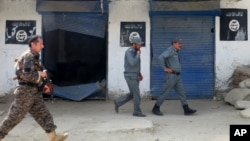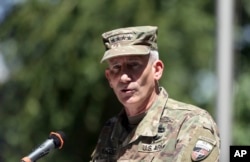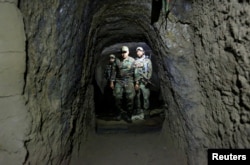The top Islamic State official in Afghanistan has been killed in a U.S. airstrike, the second such targeted killing in the past four months and third in the past year.
U.S. military officials said Friday that Abu Sayed was killed July 11 in a strike on the group's headquarters in the northeastern Afghan province of Kunar. Other IS members were also killed.
U.S. Defense Secretary Jim Mattis called the strike a sign U.S. efforts to counter the terror group in Afghanistan were going “in the right direction.”
“Every time you kill a leader of one of these groups, it sets them back,” Mattis told Pentagon reporters, refusing to go into more detail on the operation.
“We will continue until they are annihilated,” Gen. John Nicholson, the commander of U.S. and NATO forces in Afghanistan, said separately in a statement. “There is no safe haven for ISIS-K in Afghanistan.”
IS leader
Sayed took over as leader of the Islamic State's self-styled Khorasan province branch in late April or early May of this year, after the previous emir, Abdul Hasib, was killed in a U.S.-Afghan raid on a cave-and-tunnel complex in the Achin district of Afghanistan's Nangarhar province.
That raid also killed another 35 IS fighters after what U.S. officials described as a brutal, three-hour-long firefight. Two U.S. special operation force soldiers were also killed.
The U.S. military killed the group's initial leader, Hafiz Sayed Khan, in late July 2016.
U.S. and Afghan forces had launched a counteroffensive against IS this past March, focusing on fighters in eastern Nangarhar province.
Islamic State numbers dropping
In April of this year, the U.S. targeted an extensive IS tunnel-and-cave complex in Nangarhar with the largest non-nuclear bomb in the U.S. arsenal, a GBU-43 Massive Ordnance Air Blast bomb.
Officials said the ordinance, also known as "the mother of all bombs," killed 92 Islamic State fighters, though as many as 800 may have been in the area.
At its height, intelligence and military officials and analysts say, IS may have boasted as many as 2,000 to 3,000 fighters in Afghanistan. More recent estimates put the number of IS fighters in Afghanistan at fewer than 1,000.











